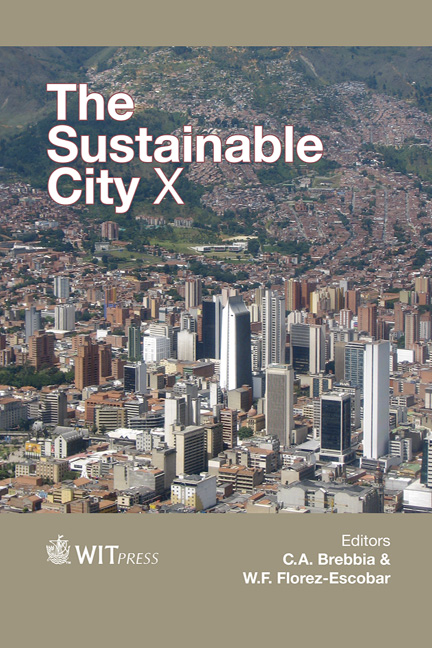A New Approach To Simulate Buildings And Their Crucial Characteristics In A Comprehensive Urban Simulation Environment
Price
Free (open access)
Transaction
Volume
194
Pages
11
Page Range
107 - 117
Published
2015
Size
2,258 kb
Paper DOI
10.2495/SC150101
Copyright
WIT Press
Author(s)
M. Ziegler, T. Bednar
Abstract
URBEM is an interdisciplinary cooperation between the Vienna University of Technology and Wiener Stadtwerke. One of the key elements is to find a proper simulation environment to simulate the effects of different urban development strategies (e.g. 2020, 2030, 2050) focusing on all buildings, the entire district heating and cooling grid as well as the whole gas and electricity grid within a district or even the entire city. The aim of this research is to find a validated method to create load profiles in terms of scalable density function for individual buildings and building neighborhoods regarding the heating, cooling and electricity demand with respect to certain building use cases, thermal qualities, construction year, HVAC-systems and even the influence of lifestyle aspects. This paper demonstrates a new approach how to implement buildings and their characteristics into a new developed urban simulation environment. Due to special requirements on the urban simulation environment, conventional building simulation tools are not capable in terms of time efficiency, interoperability and connectivity to deal with those particular initial parameters to run the entire simulation environment. By using density functions only the input of a certain urban development scenario, that is going to be investigated within the URBEM and the quantity of buildings, is needed to generate aggregated, location and time dissolved heating load curves. By comparing the results with a detailed simulation, the range of the relative deviations performs by +/−1.5%, which is an accurate and sufficient result for using scalable density function within the URBEM simulation environment.
Keywords
urban simulation environment, load profiles, density function, energy demand validation, building simulation model, urbanization





